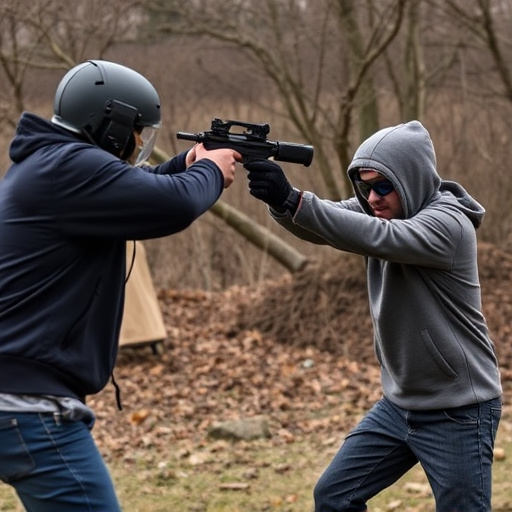The popularity of non-lethal stun guns has led to a surge in online sales, causing concern over regulation and access. With regions having varying laws, tracking these compact weapons presents challenges. Advanced technologies like thermal imaging and AI offer solutions, enhancing security screening accuracy and addressing the growing issue of non-lethal stun guns obtained online.
In today’s digital age, the rise of online sales has sparked concerns regarding concealed stun gun detection. As non-lethal weapons become more accessible through e-commerce platforms, law enforcement faces challenges in identifying these hidden devices. This article explores the intricacies of detecting concealed stun guns, focusing on both online sales and regulations. We delve into the challenges faced by authorities and present potential solutions to enhance public safety in light of this evolving trend.
- Concealed Stun Guns: Online Sales and Regulations
- Detecting Non-Lethal Weapons: Challenges and Solutions
Concealed Stun Guns: Online Sales and Regulations

The rise in popularity of non-lethal stun guns, often marketed for personal protection, has led to a significant shift in how these devices are acquired. One notable trend is the increasing number of sales through online platforms. This accessibility allows individuals to purchase stun guns from the comfort of their homes, raising concerns about regulation and responsible ownership. While some jurisdictions have implemented strict laws governing the sale and possession of stun guns, others have taken a more lenient approach, making it easier for individuals to acquire these devices without proper screening or training.
Online sales of non-lethal stun guns present unique challenges in terms of tracking and regulating their distribution. Without proper oversight, there’s a risk that these weapons could fall into the wrong hands, leading to potential safety hazards. As more states consider legislation to address this issue, striking a balance between personal protection and public safety remains a priority. The increasing availability of stun guns online underscores the need for comprehensive regulations to ensure their responsible use.
Detecting Non-Lethal Weapons: Challenges and Solutions

Detecting non-lethal weapons, including stun guns, presents unique challenges in today’s world where online accessibility of such devices has grown. While law enforcement and security personnel rely on advanced technology to identify potential threats, non-lethal stun guns often evade detection due to their compact size and diverse designs. Traditional metal detectors and x-ray scanners may not always be effective against these modern self-defense tools, which can be disguised as everyday objects like flashlights or mobile phone cases.
Addressing this concern requires innovative solutions. Advanced imaging technologies, such as thermal imaging cameras, can detect the heat signature of stun guns during use, providing a valuable tool for security screenings. Additionally, integrating AI and machine learning algorithms into detection systems enables them to recognize patterns and anomalies, improving accuracy in identifying non-lethal weapons like stun guns available online.
As we’ve explored, the rise of online sales for concealed stun guns presents both accessibility and detection challenges. While non-lethal weapons offer an important layer of personal safety, effective detection methods are crucial to prevent misuse. By implementing advanced technology and increasing awareness, we can ensure that these tools remain accessible while mitigating potential risks associated with their hidden presence. Stay informed and advocate for responsible ownership to create a safer society.
